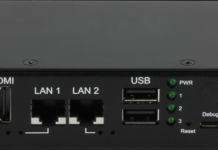
If you are planning to create revenue from stock market APIs, there are various things you first need to consider. Monetization is not only about knowing how you will generate income from your APIs. It is also about ensuring they are in full-operation and performing well for customers. If you also plan on working with cryptocurrency, you can check out a high performance cryptocurrency api for smooth operations and a more secure service. Here are some of the most important things you should consider when monetizing stock market APIs.
Decide Which Stock Market APIs You Will Use
Whether you are charting historical stock market data or building an algorithm for trading prediction, stock market APIs are invaluable. However, there are many different types of stock market APIs available, so you need to spend some time comparing them. Begin by checking out this list of the Top 8 Best Stock Market APIs for developers.
Should you offer a free version?
A popular way to get traffic to your API is to offer a free tier. That means anyone can sign up, use the API, and then understand the value it provides. Once consumers have tested the product and found it meets all of their needs, they are more likely to proceed with buying the pay-for version. Offering a free version alone will not help you make money from the product, but a free API version, in conjunction with other monetization strategies, works very well.
What type of paid version will you offer?
The first thing to do when setting up a pay-for version of your stock market API is to establish a price that consumers will be willing to pay. Here are the three most common approaches.
Tiered
Setting up multiple tiers for your API is one fantastic option. For instance, you could offer bronze, silver, and gold tiers, each of which will have its own set of allowances and services for accessing the API resources. Pricing increases as the level goes up. You will find lots of people who begin using one tier will move up to the next level once they discover how beneficial your stock market API is.
Pay-as-you-go
A utility-based model is another option. That allows consumers to only pay for what they use. You will have to determine the cost of things like storage and bandwidth incurred around API consumption before deciding on the best pricing strategy for a pay-as-you-go option.
Unit-based
Your other option is to define each API resource in terms of units. With this model, you would assign each unit a specific price. Your customers will pay for the number of units they anticipate using, and they will have the opportunity to purchase more as required.
One other option is to mix-and-match the above options to recover operational costs and generate profit.
Other Ways to Monetize Your Stock Market APIs
Besides directly generating revenue from consumers using your stock market APIs, there are additional ways in which you can create revenue. For example, you could:
Affiliate. By using cost per click, cost per acquisition, and one-time revenue-sharing models with third parties, you can generate more revenue.
Ad Revenue Share. API providers can earn a portion of the revenue via advertising.
Credits to Bill. Based on the income received through affiliation or advertising, an API provider could credit the API consumer’s bill, which would reduce developer overheads for integration and potentially reduce the API provider’s costs.


















